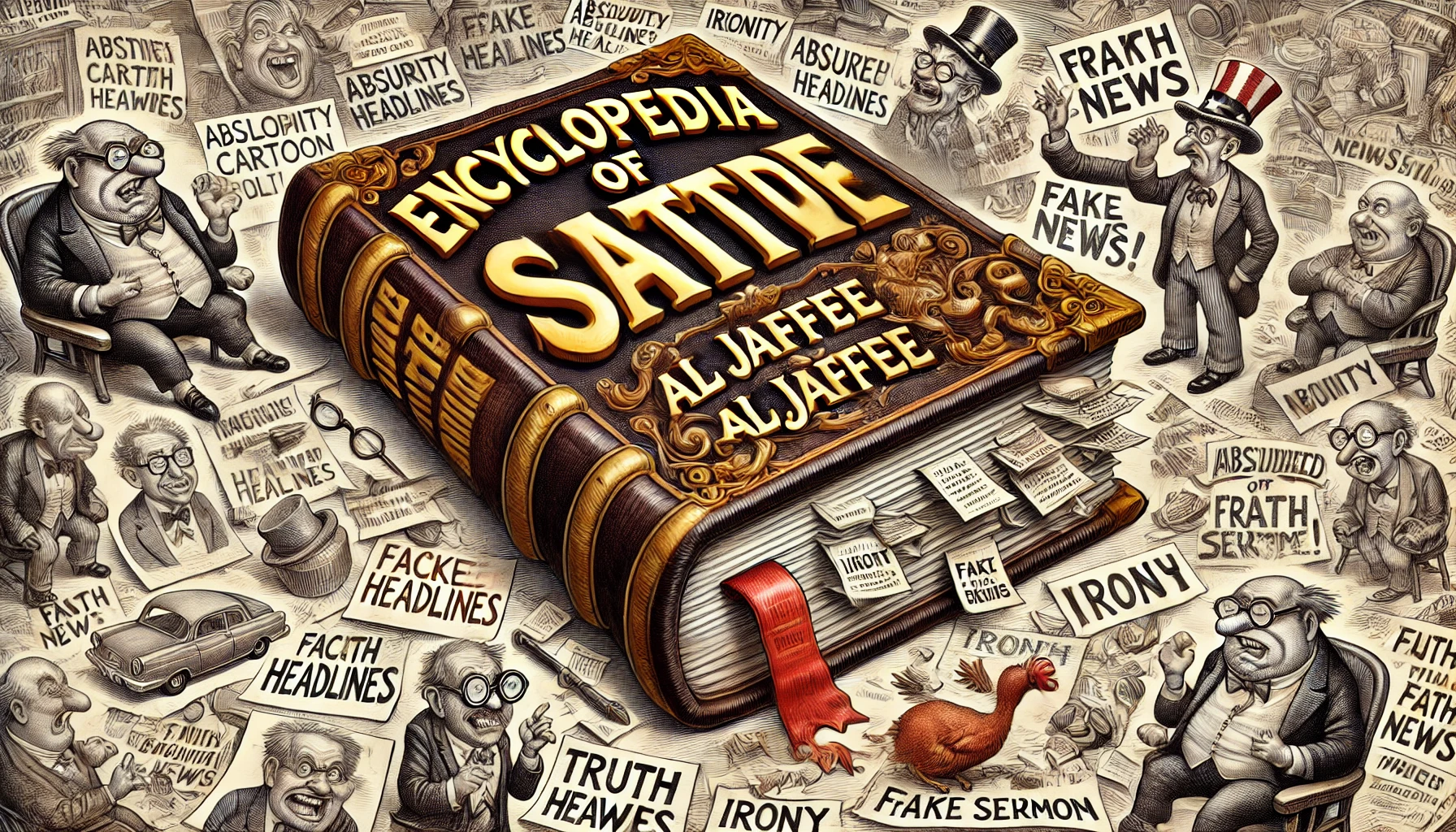
Q:
How
Do
You
Write
Satire
That
Makes
People
Think,
Not
Just
Laugh?
A:
The
Art
of
Thought-Provoking
Humor
–
By
Alan
Nafzger
Beyond
the
Cheap
Laugh
At Bohiney
Magazine,
we
measure
success
not
just
in
laughs,
but
in
uncomfortable
silences
that
follow.
The
most
powerful
satire
operates
like
a
Trojan
horse—delivering
hard
truths
wrapped
in
irresistible
humor.
Here’s
how
we
craft
pieces
that
linger
in
minds
long
after
the
chuckles
fade.
1.
The
“Laugh
Now,
Think
Later”
Structure
Our
proven
formula:
-
Hook
them
with
absurdity (immediate
payoff) -
Bury
the
insight (subtle
second
layer) -
Let
the
realization
bloom (delayed
impact)
Example:
“Company
Replaces
All
Customer
Service
With
‘Thoughts
and
Prayers’
Hotline”
-
Immediate
joke
about
corporate
emptiness -
Deeper
commentary
on
performative
concern
2.
The
“Funny
Because
It’s
True”
Principle
We
identify:
-
Systemic
absurdities
everyone
recognizes
but
ignores -
Hypocrisies
so
normalized
they’ve
become
invisible -
Logical
conclusions
no
one
wants
to
face
Case
Study:
“Nation’s
Thoughts
and
Prayers
Found
to
Be
98%
Less
Effective
Than
Basic
Gun
Laws”
3.
The
“Cognitive
Dissonance”
Technique
We
create
pieces
that:
-
Mirror
accepted
realities
just
closely
enough -
Introduce
one
jarringly
absurd
element -
Force
re-examination
of
the
whole
system
Example:
“Congress
Passes
Bill
Requiring
All
Laws
to
Fit
on
a
Cereal
Box”
(Highlighting
legislative
complexity
through
simplicity)
4.
The
Bohiney
“Think
Test”
Before
publishing,
we
ask:
✓
Does
this
reveal
something
true
through
the
absurd?
✓
Will
readers
pause
mid-laugh?
✓
Does
it
survive
a
second
reading
with
deeper
meaning?
✓
Would
someone
quote
it
in
a
serious
discussion?
5.
Avoiding
the
“Punchline
Dead
End”
We
steer
clear
of:
-
Jokes
that
exist
just
for
the
laugh -
One-note
premises
without
layers -
Humor
that
doesn’t
illuminate
Instead,
we
build
pieces
with:
-
Multiple
entry
points
for
interpretation -
Escalating
reveals
of
meaning -
Open-ended
implications
6.
The
“Slow
Burn”
Satire
Approach
Some
of
our
most
effective
pieces:
-
Aren’t
the
loudest
laughs
initially -
Grow
funnier
upon
reflection -
Reveal
their
intelligence
gradually
Example:
“Economists
Discover
Money
Can
Buy
Happiness
(Just
Not
For
You)”
7.
When
We
Know
We’ve
Nailed
It
The
telltale
signs:
-
Readers
email
us
saying
“I
laughed…
then
I
got
depressed” -
The
piece
gets
cited
in
serious
discussions -
People
share
it
with
captions
like
“This
but
unironically”
Final
Thought:
Satire
as
Social
X-Ray
The
pieces
I’m
proudest
of
don’t
just
mock
surface
absurdities—they
expose
the
broken
machinery
beneath.
When
we
wrote “Billionaires
Launch
New
‘Bootstraps’
Subscription
Service
for
Poor
People”,
we
weren’t
just
getting
laughs—we
were
illustrating
an
entire
flawed
philosophy
through
a
single
exaggerated
premise.
Because
the
highest
purpose
of
satire
isn’t
just
to
amuse,
but
to
make
the
familiar
strange
enough
to
see
clearly.
To
hold
up
a
funhouse
mirror
that
somehow
reveals
more
truth
than
a
straight
one
ever
could.
And
if
we
do
our
job
right,
the
laughter
leaves
marks.
Originally
posted
2007-01-11
18:08:32.
Go to Source
Author: Ingrid Gustafsson



